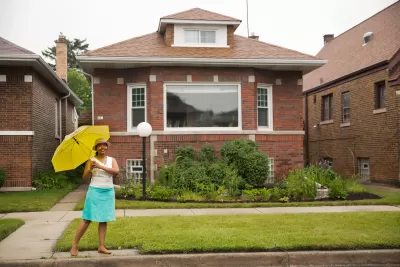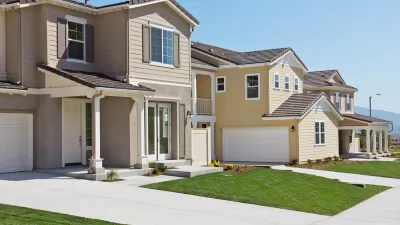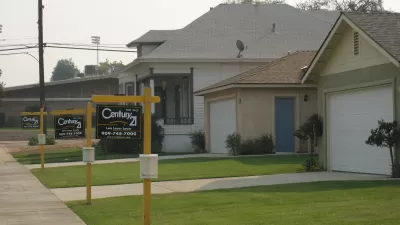Following reports that Black Americans owned homes in 2017 than in 1983, banker Teri Williams offers recommendations to diversify homeownership across the United States.

The gap in homeownership between black and white Americans is greater than it was in 1983, according to the "State of the Nation's Housing 2018" report from the Joint Center for the Study of Housing of Harvard University; just 43 percent of Black Americans owned homes in 2017, compared with 72 percent of whites. Teri Williams, a leader in the #BankBlack movement, lays out five strategies to combat the effects of the nation's racial wealth gap, shortage of affordable housing, and historically racist housing and banking policy.
One notable suggestion is beefing up first-time homebuyer programs, not only by increasing funding, but also by offering up municipal property. Rather than auctioning property acquired through foreclosures to investors, "a better alternative to diversify neighborhoods, offset gentrification and support community values would be to deed these properties to Black residents, organizations that offer first-time homebuyer programs or local private developers that partner with these organizations," Williams writes. Another recommendation is awarding Community Reinvestment Act (CRA) credits to banks for every loan provided to a Black first-time homebuyer.
FULL STORY: Five Steps Toward Ending the Black Homeownership Crisis in the US

Study: Maui’s Plan to Convert Vacation Rentals to Long-Term Housing Could Cause Nearly $1 Billion Economic Loss
The plan would reduce visitor accommodation by 25,% resulting in 1,900 jobs lost.

North Texas Transit Leaders Tout Benefits of TOD for Growing Region
At a summit focused on transit-oriented development, policymakers discussed how North Texas’ expanded light rail system can serve as a tool for economic growth.

Using Old Oil and Gas Wells for Green Energy Storage
Penn State researchers have found that repurposing abandoned oil and gas wells for geothermal-assisted compressed-air energy storage can boost efficiency, reduce environmental risks, and support clean energy and job transitions.

Private Donations Propel Early Restoration of Palisades Playground
Los Angeles has secured over $1.3 million in private funding to restore the Pacific Palisades playground months ahead of schedule, creating a modern, accessible space that supports community healing after recent wildfires.

From Blight to Benefit: Early Results From California’s Equitable Cleanup Program
The Equitable Community Revitalization Grant (ECRG) program is reshaping brownfield redevelopment by prioritizing projects in low-income and environmental justice communities, emphasizing equity, transparency, and community benefits.

Planting Relief: Tackling Las Vegas Heat One Tree at a Time
Nevada Plants, a Las Vegas-based nonprofit, is combating the city’s extreme urban heat by giving away trees to residents in underserved neighborhoods, promoting shade, sustainability, and community health.
Urban Design for Planners 1: Software Tools
This six-course series explores essential urban design concepts using open source software and equips planners with the tools they need to participate fully in the urban design process.
Planning for Universal Design
Learn the tools for implementing Universal Design in planning regulations.
Ascent Environmental
Borough of Carlisle
Institute for Housing and Urban Development Studies (IHS)
City of Grandview
Harvard GSD Executive Education
Toledo-Lucas County Plan Commissions
Salt Lake City
NYU Wagner Graduate School of Public Service





























